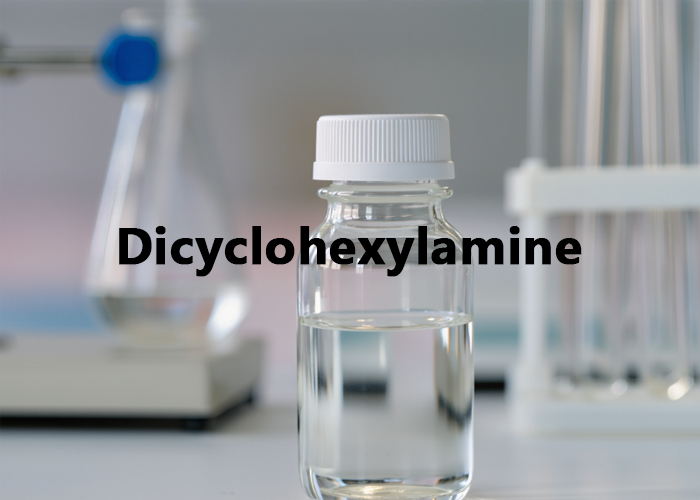Disikloheksilamin neden bu kadar nadir? Meğerse pek çok kullanım alanı varmış!
Dicyclohexylamine is a widely used fine chemical intermediate, and it is usually a byproduct of cyclohexylamine production. Cyclohexylamine is generally synthesized by catalytic hydrogenation of aniline, with dicyclohexylamine being produced simultaneously. Depending on the reaction conditions and catalyst, different proportions of cyclohexylamine and dicyclohexylamine can be obtained. Without deliberate adjustment, approximately 10% dicyclohexylamine can typically be obtained as a byproduct.
Previously, cyclohexylamine production was small, and the co-produced dicyclohexylamine did not attract much attention. Later, production increased rapidly, mainly due to the rapid increase in the production of its downstream products.
90% of cyclohexylamine is used in the production of the food sweetener sodium cyclohexylsulfamate (cyclamate) and the rubber accelerator N-cyclohexyl-2-benzothiazole sulfenamide (CBS).
The rapid increase in cyclohexylamine production capacity inevitably leads to an increase in dicyclohexylamine resources as a byproduct. Therefore, exploring the applications of dicyclohexylamine and expanding its market are very important and necessary. Dicyclohexylamine is mainly used in the synthesis of rubber accelerators, metal corrosion inhibitors, surfactants, oilfield chemicals, pharmaceuticals, and pesticides.
With technological advancements, new applications are constantly being developed, and the fine chemicals synthesized from it are mostly promising new products.
The rubber accelerator dicyclohexylamine reacts with 2-thiol-benzothiazole to prepare N,N-dicyclohexyl-2-benzothiazole sulfenamide (DZ).
Rubber accelerator DZ is one of the high-efficiency and safe sulfenamide rubber vulcanization accelerators currently encouraged for development by the state. Among sulfenamide accelerators, it has the longest scorch time, resulting in high operational safety.
Furthermore, the vulcanized rubber exhibits good mechanical and dynamic properties, making it mainly used in tires, retreading, rubber belts, and shock-absorbing products.
The fatty acid salts and sulfates of dicyclohexylamine, used as dyeing and printing auxiliaries, possess soap-like detergency. These salts are excellent emulsifiers and are mainly used in the dyeing and printing and textile industries.
Currently, due to the limited production of dicyclohexylamine, this high-performance dyeing and printing emulsifier is not yet commercially available. Dicyclohexylamine can be used to synthesize a variety of high-performance corrosion and rust inhibitors.
In the natural gas, chemical, and petroleum industries, dicyclohexylamine is used as a corrosion inhibitor for steel equipment. In the distillation of coal, adding dicyclohexylamine can reduce corrosion of fractionation towers. In oil extraction, acid is often added to accelerate drilling; adding dicyclohexylamine to the acid can prevent acid corrosion of drill bits. Adding dicyclohexylamine to electrolytic cells facilitates the cleaning of electrolytic deposits and protects the electrolytic cell from corrosion.
More importantly, solid dicyclohexylamine derivatives can serve as extremely high-performance vapor-phase rust inhibitors, outperforming currently used morpholine derivatives. These vapor-phase rust inhibitors not only prevent metal surface corrosion but also neutralize carbon dioxide in vapor condensates, resulting in better rust prevention and wide application in industrial fields. Dicyclohexylamine can be used to synthesize various pharmaceuticals and pesticides. For example, it can be used to synthesize styrene, a novel drug for treating hypertension, as well as several new anti-tumor drugs. It can also be used as a drug extractant. Dicyclohexylamine can be used to synthesize insecticides. Its carbamoyl chloride is a high-performance plant protectant.
Dicyclohexylamine is a good additive for waterproofing materials. Adding a certain amount of dicyclohexylamine to some plastic and rubber building materials can improve their hydrophobicity and corrosion resistance. Other applications of dicyclohexylamine are very widespread internationally.
As an antioxidant additive for fuel oil, it can not only modify the combustion performance of fuel but also prevent fuel corrosion of equipment; it can act as a catalyst in coatings; it can be used as a plasticizer for latex and casein; it can prevent electrostatic effects in cellulose derivatives; in the environmental field, it can be used as a solvent in the dye and printing industry to absorb acidic gases such as carbon dioxide, hydrogen sulfide, and sulfur dioxide; in the food additive field, it can be used as an additive for soybean products; as a finishing agent for polyester fibers, it can prevent pilling and discoloration; and in cutting fluids for metal grinding, it can improve the wear resistance and corrosion resistance of diamond grinding tools, etc.
With the continuous expansion of cyclohexylamine industrial plants, the production of dicyclohexylamine is gradually increasing. Furthermore, accelerating the development of its application areas can also promote the stable and healthy development of dicyclohexylamine and cyclohexylamine plants.